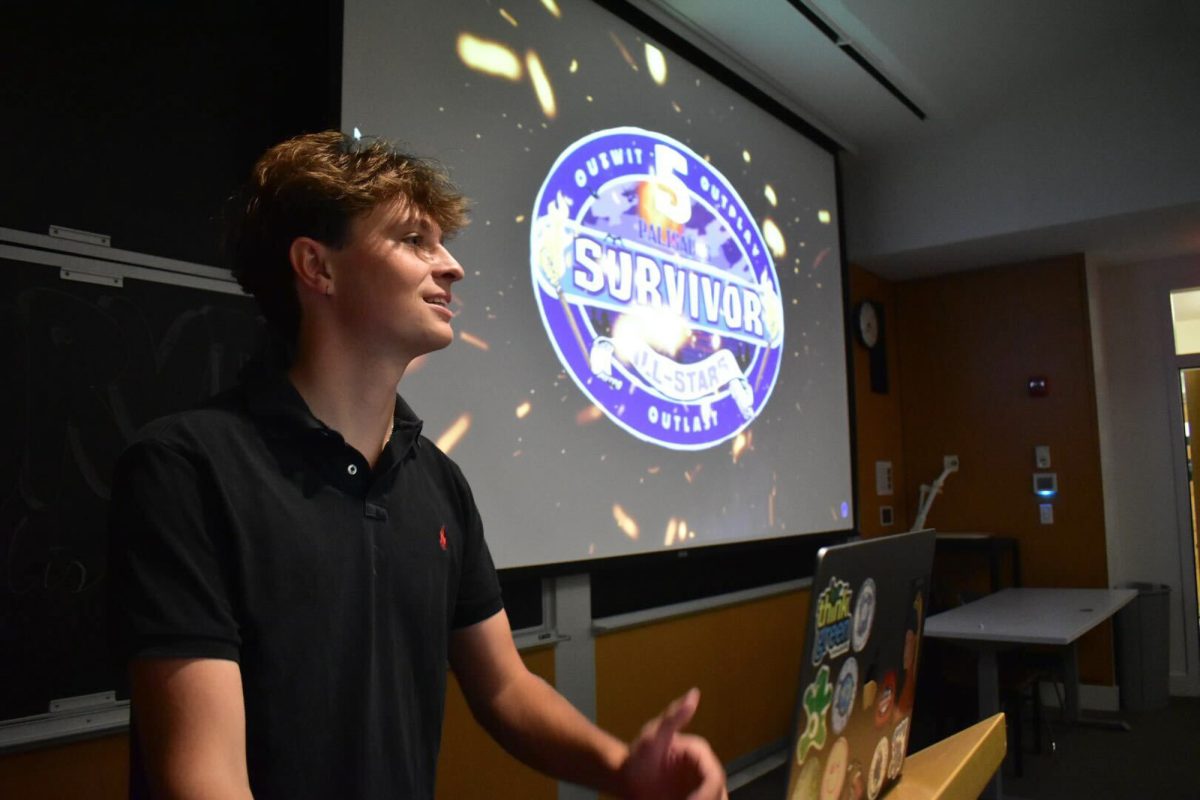
AVA RUBIN
Emmett Whitaker, a sophomore at Boston University and the main creator of his own fanmade series — “Survivor: Palisades” — took inspiration from the CBS reality television show. While the show began as a creative project, the clips now serve as a way to look back on places lost due to the fires in Los Angeles back in winter.
Over the past seven years, Boston University sophomore Emmett Whitaker has casted, funded, produced and edited five seasons of “Survivor Palisades” — a fan-made version of the competition reality television series “Survivor.” After disaster struck his community, the footage was all that remained.
Earlier this year, a highly destructive series of wildfires swept California, primarily affecting the Pacific Palisades. Whitaker, a Palisades native, was editing his fifth and final season of “Survivor Palisades” when the fires destroyed his home.
In the aftermath, his years of footage suddenly became an archive of his community, Whitaker said.
“I think it’s starting to hit me more that all this is gone and is in media form,” he said. “After the fires, I think [the footage] means something completely different.”
As a longtime fan of “Survivor,” Whitaker closely honors the show’s format through challenges, tribal councils and confessionals — though organizing its moving parts took trial and error to perfect, he said.
The original “Survivor,” which is filmed over 26 days in the remote islands of Fiji, pits contestants against each other in various challenges, where they form alliances and strategize in an effort to “outwit, outplay and outlast” one another, according to CBS.
When Whitaker filmed the first season of “Survivor Palisades” at 12 years old, he recruited eight of his family members, friends and their parents to participate in challenges for five hours.
“You can imagine kids voting out their parents or vice versa is not the best. It’s not a great recipe for success,” he said. “But we learned from it, and so we kept building it after the years, and it turned into something else.”
While the contestants aren’t starving or building camps like on the real show, Whitaker said he aims to foster the spirit of “Survivor” through physical and mental challenges.
“‘Survivor’ is definitely like a culture,” he said. “When you watch ‘Survivor,’ the more you get involved, the more you understand it’s a really strategic game. The culture of ‘Survivor’ can be transmitted through just a challenge.”
While the nature of “Survivor Palisades” is inherently competitive, the spirit of the community takes precedent.
EllaRose Matlins, Whitaker’s former classmate who competed in seasons four and five, said she appreciated the “playful competition” that occurred between the contestants.
“The fun part about it was that you were in a completely safe space,” Matlins said. “Nobody actually had any rivalry.”
Chloe Smigla, a longtime family friend of Whitaker’s who competed in seasons three and five of the series, said it’s been impressive to see how much the production’s grown since its infancy.
“He’s just so dedicated to it. It’s something that’s so big in his life, such a big part of his growing up and who he is,” she said. “It’s really cool to see all of the love that he’s getting for the show and also for his hard work.”
To some contestants, the footage was more than just a show — it was a commemoration of what was lost in the process. Many of the cast and crew members’ homes were destroyed, which changed the context of their participation.
Carlie Given, a friend of Whitaker’s sister and season five crew member, described watching the overhead shots in season five as “dystopian.”
“I feel like it’s a weird flashback, knowing that nothing is there,” Given said. “You look at the screen, and that’s something that doesn’t exist anymore.”
Smigla said while she felt a similar sense of loss, having the footage gave her something to hold on to.
“I probably took it for granted before, and so after essentially losing it all, it’s really nice to see this memento of the Palisades,” she said.
While the show has always been filmed in the Palisades, season five used 45 crew members, 20 cameras and several drones to capture the Palisades’ green spaces, flora and wildlife in even greater detail than seasons prior.
In the months that followed the fires, Whitaker edited hours of this footage, an experience he described as “jarring.”
“I don’t think I fully processed it because I still had that world to edit and see in a different way,” Whitaker said.
This past summer, Whitaker hosted an exclusive screening of season five’s first episode, which nearly 150 cast, crew members, friends and family attended.
Since the fires, several of Whitaker’s friends and former neighbors have been displaced from the Palisades. While it was emotional to be amongst those devastated by the fires, Whitaker saw the community’s reconvening as a “silver lining.”
“There’s very few people from my community that I can still see as a neighbor,” Whitaker said. “I think for everyone to come together was really special and very impactful, because this community has been so isolated.”
Last year, when Whitaker was a freshman at BU, he said the footage allowed him to stay connected to the Palisades from thousands of miles away.
“It’s a little surreal, because we’ve all filmed on those grounds, and they’re just gone,” Whitaker said. “The impact to the community has been, more than anything, closure for people to be able to get something permanent that shows what they had.”
For Whitaker, the experience of filming and preserving “Survivor Palisades” has reinforced the importance of community and memory.
“[The series] sort of emulates that at the end of the day, what really matters is people and community,” Whitaker said. “I think that’s a beautiful thing to learn.”